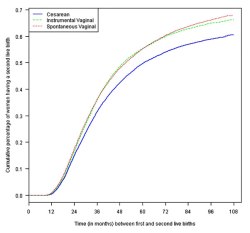Approximately one in 33 babies in the U.S. is born with a birth defect. Among the most common of these are atrioventricular septal defects, spina bifida, and intestinal atresia or stenosis.1 Many major defects are detected early in pregnancy during routine ultrasound imaging. “For women with a complex, high-risk pregnancy, a multidisciplinary team is usually needed to manage the needs of the mother and baby, throughout pregnancy, delivery and in the postpartum period,” explains Jaimey M. Pauli, M.D., a maternal-fetal medicine specialist, Penn State Hershey Obstetrics and Gynecology. Dr. Pauli and Thomas Chin, M.D., chief, pediatric cardiology, are co-directors of the Penn State Hershey Perinatal Program at Penn State Hershey Medical Center and the Children’s Hospital, an active outreach program for pregnant women at high risk or patients who have newborns with birth defects or abnormalities.
“Expectant parents are often overwhelmed when they learn about these types of serious fetal abnormalities. Aside from help coping with the obvious emotional impact, they need help obtaining the complex care their baby requires. With our program, a team of specialists handles everything and provides highly coordinated care at a single center, which reduces a lot of stress and supports the parents,” adds Dr. Pauli. Through the perinatal program, Drs. Pauli and Chin assemble a team of maternal-fetal medicine specialists and pediatric specialists. This team can include pediatric cardiologists, cardiothoracic surgeons, neonatologists, neurosurgeons, pediatric surgeons, nephrologists, urologists, orthopaedic surgeons, radiologists and social workers, based on the needs of each individual infant and aimed at achieving the best possible outcomes. Continue reading







